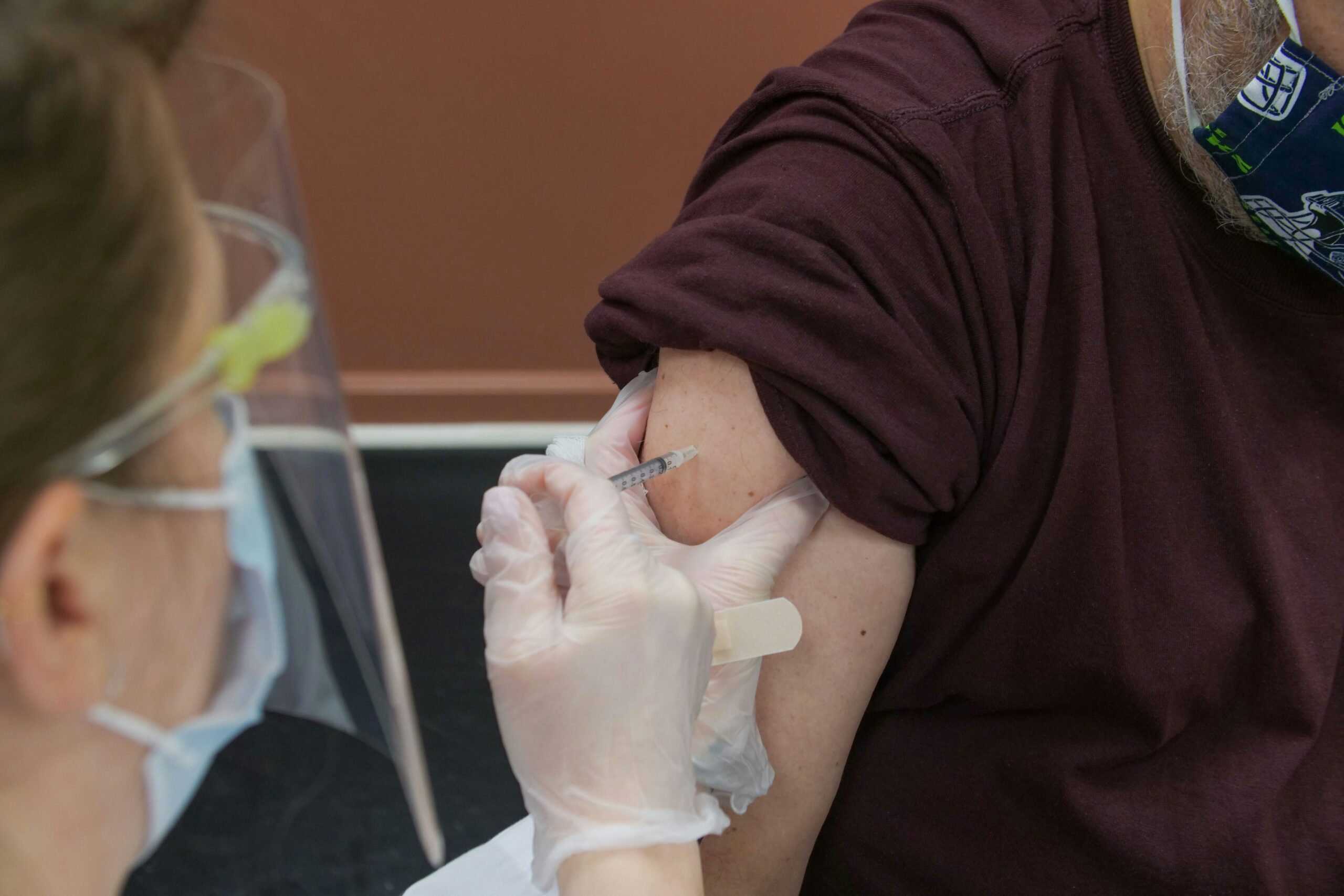Wanting to quit drinking alcohol and knowing how to quit drinking are two very different things. Thankfully, there are many resources available to help individuals struggling with an addiction to alcohol through the process of detox and then rehab. Since the risks of addiction are so high, it’s vital that everyone ready to embrace sobriety follow a tried-and-tested road to recovery.
Understand that Alcoholism is an Illness
Humans have used alcohol for centuries. Still, when alcohol use gradually develops into an alcohol use disorder, it is time to quit drinking.
Moderate drinking is described as two drinks a day for men and one for women. A standard drink is 12 ounces of 5% beer or 8 ounces of 7% malt liquor, 5 ounces of 12% wine, or 1.5 ounces of 40%+ distilled spirits/liquor (gin, rum, vodka, whiskey).
Alcohol use disorder (AUD), also known as alcohol addiction or alcoholism, is a common and chronic condition characterized by excessive and repetitive drinking. It describes the inability to control drinking despite adverse social, professional, or health effects because of physical and emotional dependence on alcohol.
The World Health Organization (WHO) reported that alcohol use was a factor in more than 200 diseases and injury-related health conditions in 2018, including cancer, cardiovascular disease, suicide, liver disorders, and injuries sustained on the road and in violent situations.
Studies show that 1 person in every 10 Americans (over age 12) has an alcohol use disorder. Every year, about 140,557 Americans die from the effects of alcohol use. Sadly, about 60% of Americans increased alcohol consumption during the COVID-19 lockdowns.
Due to the widespread acceptance of drinking as a social activity and a means of stress relief, overcoming alcohol dependence can be a complex process. Yet it is a goal that can be fully attained, especially as more people start to examine the impact that alcohol has on their lives and health and begin to see the advantages of quitting, or at the very least, temporarily stepping away from alcohol use.
Reasons Why Heavy Drinking Or Alcoholism Can Occur
While it is largely unknown what causes alcoholism or alcohol use disorder. It is believed to manifest when a person consumes so much alcohol that the brain undergoes chemical and structural changes that results in compulsive alcohol use, which continues despite any adverse effects.
Studies conducted to investigate the causes and risk factors associated with alcoholism have revealed that several factors predispose people to alcohol abuse. These factors are categorized as follows:
Biological:
Alcoholism can develop as a complex genetic condition that is influenced by variations in a large number of genes. ADH1B and ALDH2, regarded as genes of alcohol metabolism, are two genes with the most relevant known effects on a person’s risk for alcoholism. Additionally, reports from various research, including those done by The National Institute on Alcohol Abuse and Alcoholism (NIAAA), show that people with alcoholic parents or other close relatives are more likely to develop an alcohol problem.
Environmental:
Behavioral health professionals have concluded that an individual’s surroundings can facilitate alcoholism. People who live or grow up around where alcohol is readily available are more likely to have alcohol use problems. Additionally, a person’s perception of alcohol can be altered by environmental factors such as stress, trauma, and cultural attitudes toward the drinking of the people around them.
Social:
When it comes to alcohol abuse, socioeconomic status (SES) indicators like education, income, and occupation play a significant part. People with lower education and income levels are more likely to develop alcohol problems. Also, teens and young adults are much more likely to consume alcohol and develop alcohol abuse if their environment and peers constantly emphasize underage drinking.
Psychological:
A variety of psychological factors increase the likelihood of heavy drinking. For instance, people who experience high-stress levels, anxiety, depression, or other mental health issues are more likely to become dependent on alcohol. This is quite often because mental health issues frequently result in psychologically unhealthy coping techniques to alleviate the symptoms of psychological distress.
When is it Time to Seek Help With Alcohol Use
Generally, individuals should reduce or stop drinking when alcohol use is excessive or negatively affects their health, work, and relationships with others. Still, it advised to seek professional care when quitting alcohol to safely detoxify from alcohol use. You are strongly advised to stop drinking if;
- You get frequent hangovers.
- You spend more on alcohol than you should.
- You binge drink, that is, five or more drinks in 2-3 hours for men or four or more drinks in 2-3 hours for women.
- You are a heavy drinker, i.e., fifteen or more drinks for men or eight or more for women weekly.
- You are pregnant.
- You are under the age of 21.
- You have an alcohol use disorder or are currently exhibiting symptoms of alcohol abuse.
- You have a medical condition that is worsened by alcohol use. These include liver cirrhosis, hepatitis C, chronic pain, and certain heart conditions.
- You are taking medications that may interact negatively with alcohol.
- Alcohol use affects your output at work or school.
- You are prone to erratic or violent behavior after drinking.
Benefits Of Not Drinking
Quitting alcohol use comes with several benefits, which include the following;
- Improved liver function.
- Improved heart health.
- Better sleep.
- Improved immune function.
- Decreased blood sugar.
- Less brain fog.
- Blood pressure reduction.
- More energy.
- Improved output at work or school.
- Improved social relationships.
- Improved absorption of nutrients
- Fewer alcohol-related injuries and accidents.
Dangers Of Quitting Drinking On Your Own
According to the National Center for Drug Abuse Statistics (NCDAS), less than 8% of the 15 million people with Alcohol Use Disorder (AUD) receive treatment. This happens because many people with alcoholism never seek professional assistance because they often believe the issue is not severe enough to require professional intervention.
It is hazardous and, in some instances, life-threatening to quit alcohol use without professional intervention. This is due to the intense withdrawal symptoms of alcohol use cessation. These symptoms typically include hand spasms, delirium tremens, nausea and vomiting, profuse sweating, hyperactivity, and anxiety.
People with alcohol use disorders and more consistent drinking habits are prone to intense cravings and withdrawal symptoms if alcohol use is stopped.
Those who want to successfully quit drinking alcohol and stay sober for a lifetime will need to cease all alcohol consumption. A detox is a necessary component of recovery, but it can be accompanied by a number of withdrawal symptoms. Some of the most common withdrawal symptoms experienced by those in an alcohol detox can include:
- Shaking or restlessness
- Nausea, abdominal cramping or diarrhea
- Temperature fluctuations
- Sweating and extreme dehydration
- Increased heart rate or blood pressure
- Potential for delirium tremens
When individuals decide to quit alcohol consumption by going cold turkey on their own, these withdrawal symptoms can go from uncomfortable to dangerous. It’s only in a professional treatment facility that patients will get the necessary medical supervision 24/7 that’s required during a detox.
Steps That You Can Take at Home to Reduce Drinking
Set a drinking limit:
Establishing a drink limit and taking measures not to exceed the recommended guidelines helps keep drinking in check. The National Health and Medical Research Council (NHMRC) recommends that adults should limit their alcohol consumption to no more than one standard drink per day for women and two standard drinks per day for men younger than 65.
Switch to low or no-alcohol alternatives:
Low and alcohol-free beverages are good alternatives for reducing drinking as they contain little to no alcohol. In addition, switching from alcoholic to non-alcoholic beverages makes it easier to gauge how you feel physically and emotionally when alcohol is not in the picture.
Avoid places or people that encourage alcohol use:
When trying to reduce alcohol consumption, avoiding situations and people that make you want to drink is a good idea. You could also change your routine by finding healthier alternatives or hobbies to time spent drinking.
Create a plan of what to do while quitting alcohol:
Have a plan for when you will quit alcohol, how you will do it, and what to do if you backtrack. Having a guide can help you stay motivated and gradually achieve your goals.\
Steps You Can Take At Home To Stop Drinking (Non-heavy drinkers only)
A planned course of action for quitting drinking at home supports and reinforces your decision to give up drinking permanently. In addition to seeking professional help, pair their recommendations with these tips;
Engage in some introspection:
Take a break to reflect on how alcohol affects you and why you should make a change. Recognizing and acknowledging your feelings, convictions, and triggers and how they impact your choices and decisions is a crucial component that strengthens your resolve to quit alcohol for good.
Have tenacity:
Deciding to stop drinking is the first step; committing to the cause is another critical step. Although, relapse prevention requires more than willpower. Having the strength and tenacity to bounce back will support your sobriety journey and keep you motivated to maintain a lifetime of complete abstinence.
Reduce access to alcohol:
An excellent place to start is to remove alcohol and alcohol-related items that are easily accessible. Additionally, it would help if you stayed away from places like bars, liquor stores, and gatherings where alcohol is served.
Enlist the support of loved ones and friends:
To have the best chance of success in turning over a new leaf, you need the help and support of friends and family to navigate the recovery process and keep you motivated.
Steps People Can Take To Avoid Drinking When They Get Cravings
- Remind yourself of the adverse effects of alcohol in your life and why you need to change.
- Use a healthy alternative activity to distract yourself from drinking.
- Avoid being around environments or people that encourage alcohol use.
- Recognize your triggers and steer clear of them.
- Seek professional care to get medications that help manage cravings.
The Benefits of a Professional Treatment Facility
Medical supervision and attention may be the biggest benefit of attending an addiction treatment facility for detox, but other advantages include accountability, support and expert help for transitioning into a rehab program. Most detox facilities are closed premises, which means that patients can’t bring illicit substances with them. This can help reduce cravings and ensure that all patients are able to stick with their sobriety throughout the detox. After detox, patients who want to know how to quit drinking for the long term will want to transition to a rehab center. These centers can offer individual treatment, group counseling, dual diagnosis care and a range of life skills that will be beneficial for patients.
Achieving sobriety is a major step, but maintaining that sobriety in the face of cravings and temptations will be an ongoing struggle. Those who understand the risk of relapse, which runs between 40 and 60%, will be better equipped to resist cravings and continue with the healthy, sober lifestyle. Knowing how to quit drinking successfully can be the first step toward recovery. For more help, contact Lakeview Health in Jacksonville, Florida, at 866 704 7692 to begin your new life today.




